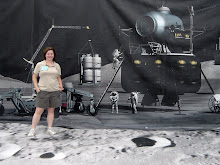This week, we find out that the object that crashed through that house in New Jersey is not a meteorite. When a test for nickel was conducted at the American Museum of Natural History, it turned out to be made of a human-made stainless steel alloy. So, density and magnetism are good indicators for meteorite, but they are also properties of many, many chunks of rock, ore, and slag here on Earth.
In fact, the most definitive test of the meteoritic origin of metal is the nickel content. When the Earth differentiated, forming a crust, mantle, and core, nearly all the iron, nickel, gold, platinum, and other metallic elements went into the core. That's why there aren't big chunks of metal in the crust. The metal we get through ores is in small quantities and usually collected in mineral form, which is why they are scarce and valuable. The process of smelting can convert the ore iron into its metallic form, but there won't be any nickel associated with it. Now, the same differentition happened on some large asteroids - but the iron meteorites come from the asteroid core itself, where all the metals went. So the iron in meteorites contains a lot of nickel - usually 5% but up to 35% - plus traces of lots of other metals. No rock on Earth has all the metals wrapped up into one. Even further, the iron and nickel in some iron meteorites cooled slowly from the molten state and formed two different minerals, kamacite (low-Ni) and taenite (high-Ni), and you can see these mineral crystals in the meteorite when you etch a cut surface (called Widmanstatten pattern). No rocks but meteorites have slowly-cooled Fe,Ni minerals in them. But to be able to tell Ni content and Widmanstatten pattern, you need to open the rock up and run some tests on it. So density and magnetism aren't the whole story.
Want more information on how you can tell if you have a meteorite? Glad you asked. Also, see more about metal in meteorites, including nice photos.
Subscribe to:
Post Comments (Atom)

No comments:
Post a Comment